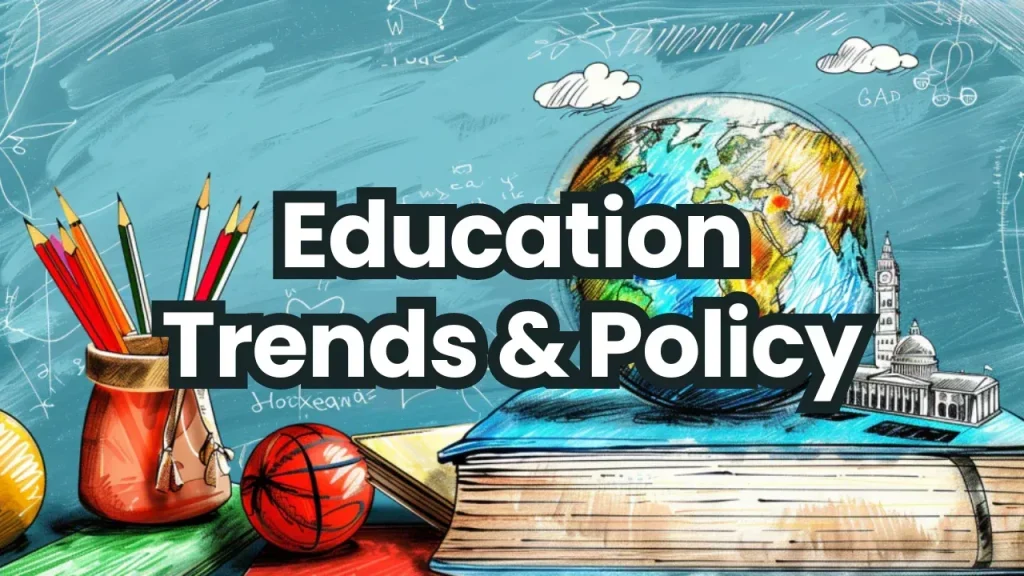Global Education Trends are reshaping classrooms worldwide as they push schools to rethink teaching in the digital era. From digital literacy in schools to edtech adoption in education, this shift creates new opportunities and responsibilities for learners and teachers. To thrive in this era, students must develop 21st-century skills, while educators design learning that blends technology with inquiry. Remote learning and hybrid models are expanding access but also challenging the equity and infrastructure that schools provide. Understanding this movement helps policymakers, administrators, and families support inclusive, high-quality learning for every student.
Beyond these evolving schooling patterns, the broader movement describes a global reshaping of how knowledge is produced, shared, and assessed. Educators are asked to design flexible, technology-enabled learning ecosystems that adapt to students’ needs, contexts, and cultural backgrounds. This shift emphasizes interactive inquiry, collaborative projects, and real-world problem solving powered by connected devices, platforms, and data-informed practices. As schools navigate infrastructure gaps and policy considerations, stakeholders seek scalable models that balance access, quality, and personalization in a connected world.
Global Education Trends: Redefining Classrooms in the Digital Era
Global Education Trends are reshaping classrooms worldwide as schools embrace the digital era. This shift goes beyond merely swapping textbooks for tablets; it reimagines how learning happens, how teachers design experiences, and how institutions ensure equitable participation across backgrounds. With greater connectivity and access to online resources, learners can explore diverse perspectives, collaborate across borders, and develop the competencies needed for an interconnected world.
To capitalize on these trends, digital literacy in schools must become foundational. Students learn to evaluate sources, protect privacy, and responsibly create and share content. Edtech adoption in education should be guided by clear learning goals and strong pedagogy, enabling personalized pathways, real-time progress monitoring, and student-centered tasks. Together with 21st-century skills—such as collaboration, communication, creativity, and critical thinking—these elements prepare learners for remote learning and hybrid models that offer flexibility while maintaining high standards. Administrators also need to invest in infrastructure and ongoing professional development to ensure equitable access and meaningful outcomes.
Digital Literacy in Schools, EdTech Adoption, and 21st-Century Skills in Modern Learning
Digital literacy in schools goes beyond knowing how to operate devices; it includes evaluating information, recognizing bias, practicing safe online behavior, and using digital tools to research, create, and communicate. In an era of abundant information, students become active designers of their learning, leveraging remote learning and hybrid models to access experts, collaborate on projects, and engage with authentic tasks. This emphasis also calls for inclusive design so all learners can participate, regardless of background or circumstance.
Effective edtech adoption in education requires aligning tools with learning goals rather than chasing the newest gadget. When educators select interoperable platforms, provide professional development, and apply data-informed instruction, technology becomes a lever for developing 21st-century skills such as critical thinking, communication, creativity, and collaboration. By building cross-disciplinary projects and real-world products, schools can demonstrate mastery while ensuring equitable access and strong digital citizenship.
Frequently Asked Questions
What do Global Education Trends reveal about digital literacy in schools and its impact on today’s learning?
Global Education Trends reveal that digital literacy in schools is foundational for 21st-century skills. Students learn to evaluate information, protect their digital footprints, and collaborate using digital tools, while teachers leverage student-centered, project-based approaches. Effective implementation blends digital literacy with disciplinary content and pairs instructional change with thoughtful edtech adoption in education, underscored by ongoing professional development and strong digital citizenship.
How can schools implement Global Education Trends to guide edtech adoption in education and develop 21st-century skills?
Global Education Trends guide how to implement edtech adoption in education and cultivate 21st-century skills through remote learning and hybrid models. Focus on aligning tools with learning goals, enabling collaboration, and using data-informed assessment, while ensuring equity through device access and reliable connectivity. Success also requires universal design for learning, robust teacher professional development, and infrastructure that supports diverse learners.
| Aspect | Key Points |
|---|---|
| Digital era & knowledge access | Access to diverse information beyond teachers; emphasizes critical thinking, synthesis, and ethical use; digital literacy is foundational; evaluate sources, protect digital footprints, and collaborate using digital tools. |
| Edtech adoption at scale | Devices, platforms, and data analytics enable personalized instruction and real-time progress monitoring; technology is a means to an end; integrate with thoughtful pedagogy; shift toward student-centered classrooms; teachers as facilitators. |
| 21st-century skills | Collaboration, communication, creativity, and critical thinking; these skills are connected with digital literacy and reinforced through project-based learning and cross-disciplinary work. |
| Remote learning & hybrid models | Remote/hybrid models expand access and flexibility but can worsen inequities if devices or connectivity are lacking; strategies include device programs, affordable connectivity, and community learning hubs; design supports asynchronous and synchronous engagement. |
| Teacher professional development | PD is critical to translate trends into practice; focus on pedagogy, data-informed instruction, and digital citizenship; ongoing learning and strong institutional support are essential. |
| Implications for learners and educators | Learning becomes more personalized and collaborative; students pursue interests and demonstrate mastery in multiple formats; teachers reimagine routines, create inclusive spaces, and leverage data to guide instruction. |
| Practical strategies (8 actions) | 1) Strengthen digital literacy across curricula; 2) Align edtech with learning goals; 3) Embed 21st-century skills in project-based and cross-disciplinary work; 4) Build robust remote/hybrid models; 5) Prioritize equity and access; 6) Invest in teacher leadership and professional development; 7) Foster global collaboration and intercultural competencies; 8) Measure impact and iterate. |
Summary
Global Education Trends are reshaping how we prepare learners for the digital era. The core focus is on strengthening digital literacy, thoughtful edtech adoption, and developing 21st-century skills, while ensuring equitable access and robust teacher development. By embracing remote and hybrid models, inclusive pedagogy, and project-based learning, educators can create engaging, resilient learning environments that empower students to think critically, collaborate creatively, and contribute responsibly in a globally connected world.

